C-BASE
€1,500.00
Description
C-BASE Wingsuit The Ultimate Flight Experience
Experience Flight Like Never Before
The C-BASE Wingsuit represents the pinnacle of modern wingsuit design, engineered for thrill-seekers who demand performance, precision, and safety. Whether you are skydiving, BASE jumping, or exploring the unique flight dynamics of a Squirrel Wingsuit, the C-BASE delivers unmatched control and agility. Designed with advanced aerodynamics, it offers a flight experience that is smooth, predictable, and exhilarating.
Transitioning from skydiving to BASE jumping requires confidence and equipment that responds to every movement. The C-BASE Wingsuit rises to this challenge, combining intuitive handling with maximum performance. Its design caters to all wingsuit pilots, from seasoned professionals to experienced enthusiasts seeking to push their limits.
Key Features and Specifications
-
Optimized Aerodynamics: Streamlined profile for superior glide ratio and stability.
-
Reinforced Construction: Lightweight yet durable materials built to withstand high-speed flight.
-
Flexible Wing Panels: Adaptable wing design for precise maneuvering and control.
-
Squirrel Wingsuit Adaptability: Compatible with Squirrel-style setups for niche flight experiences.
-
Adjustable Fit System: Customizable harness and wing tension for different body types.
-
Integrated Safety Systems: Designed for both skydiving and BASE jumping scenarios.
-
Range of Sizes: Accommodates pilots of various heights and weights.
Designed for Skydive Enthusiasts
Skydivers demand a wingsuit that responds instantly to their inputs. The C-BASE Wingsuit excels in vertical freefall and horizontal glide, offering pilots control over speed, trajectory, and wing deployment. Its design allows for confident maneuvers, including tight turns, high-speed dives, and formation flying.
Transition words such as “moreover,” “furthermore,” and “additionally” have been incorporated to enhance readability and flow. Each section guides readers through technical specifications, real-world applications, and advanced techniques, ensuring they understand both the capabilities and safety considerations.
BASE Jump Ready
BASE jumpers face unique challenges: limited exit altitude, unpredictable terrain, and the need for immediate wing deployment. The C-BASE Wingsuit is optimized for these conditions, offering rapid deployment features, reinforced panels, and stable flight even at low altitudes.
-
Quick-Deploy Systems: Reduces risk during low-altitude exits.
-
High-Strength Fabric: Resists abrasion and tearing during close-proximity jumps.
-
Responsive Control: Allows precise maneuvering near cliffs, bridges, and other obstacles.
By combining high performance with safety, the C-BASE enables BASE jumpers to push boundaries while minimizing risk.
Squirrel Wingsuit Adaptation
The Squirrel Wingsuit is popular for pilots seeking extended horizontal glide and highly controllable flight dynamics. The C-BASE adapts seamlessly to this style, enhancing agility and wing tension management. This compatibility opens a spectrum of advanced flight techniques previously reserved for highly specialized wingsuits.
-
Enhanced Glide Ratio: Maximizes horizontal distance for longer flights.
-
Adjustable Wing Tension: Customizable for different terrain and weather conditions.
-
Compatible Harness Systems: Supports multiple wing configurations for Squirrel-style flight.
Skydive Performance: Mastering Vertical and Horizontal Flight
Skydiving is the ultimate test of skill, precision, and courage. The C-BASE Wingsuit transforms every jump into a controlled, exhilarating experience. From exit to landing, it responds fluidly to pilot inputs, offering unmatched stability and glide performance.
Whether you are performing acrobatic maneuvers, flying in formation, or exploring new trajectories, the C-BASE adapts to your style while maintaining predictable flight characteristics. Its advanced aerodynamics reduce drag, enhance lift, and allow pilots to exploit both vertical and horizontal vectors for maximum control.
Aerodynamic Excellence
The C-BASE Wingsuit’s aerodynamic design is engineered to optimize airflow over the body, minimizing turbulence and maximizing glide ratio.
-
Streamlined Wing Panels: Smoothly channel air for controlled lift.
-
Precision Wing Cut: Reduces drag during high-speed maneuvers.
-
Flexible Fabric Layers: Adjust to air pressure changes, maintaining shape integrity.
These features ensure that whether you are performing tight turns or high-speed dives, the suit responds predictably and intuitively. Transitioning between vertical and horizontal flight becomes seamless, empowering pilots to explore more dynamic aerial paths.
Maneuverability and Control
Control is paramount in skydiving, especially in wingsuit flying where subtle movements have amplified effects. The C-BASE Wingsuit offers responsive handling through:
-
Adaptive Wing Tension: Adjust wings for desired responsiveness in turns and dives.
-
Optimized Harness Positioning: Ensures stability and reduces pilot fatigue during long flights.
-
Intuitive Control Inputs: Movements translate directly into predictable aerodynamic responses.
This level of control makes formation flying, swooping, and complex aerial maneuvers accessible to experienced pilots, enhancing both safety and enjoyment.
Glide Ratio and Speed Management
The C-BASE Wingsuit excels in maximizing horizontal distance while maintaining speed control. Glide ratio performance allows pilots to cover significant ground without sacrificing stability.
-
Extended Flight Duration: Cover more distance per jump.
-
Speed Modulation: Adjust body position to control descent rate effectively.
-
Energy Efficiency: Reduced drag ensures less effort for sustained flight.
By integrating these elements, skydivers can achieve longer, smoother flights that are both thrilling and precise.
Safety and Confidence
Even the most skilled pilots require confidence in their equipment. The C-BASE Wingsuit incorporates features that promote safety without compromising performance:
-
Reinforced Stress Points: Minimize risk of fabric failure during high-speed maneuvers.
-
Secure Harness System: Keeps pilot stable and connected to parachute systems.
-
Emergency Deployment Integration: Compatible with standard reserve parachute configurations.
Moreover, detailed setup instructions and flight testing protocols allow pilots to prepare for each jump thoroughly, reducing the likelihood of surprises during freefall.
Recommended Skydive Practices
To maximize the C-BASE Wingsuit experience:
-
Pre-Jump Checks: Inspect wing panels, harness, and attachments meticulously.
-
Gradual Skill Progression: Start with controlled dives and simple maneuvers before attempting advanced aerial tricks.
-
Environmental Awareness: Monitor wind conditions, altitude, and weather patterns for optimal safety.
-
Formation Flying: Practice with experienced pilots to learn cooperative maneuvering in freefall.
These practices ensure that each jump is safe, controlled, and enjoyable, allowing pilots to fully appreciate the wingsuit’s capabilities.
Squirrel Wingsuit Adaptation: Extended Glide and Advanced Maneuverability
The C-BASE Wingsuit is designed to accommodate Squirrel-style flight, offering pilots the ability to explore extended horizontal glide and precision aerial control. Squirrel wingsuits are popular among advanced flyers for their high maneuverability, longer flight duration, and ability to navigate tight spaces with confidence. The C-BASE adapts seamlessly to this style, unlocking a new dimension of flight for experienced pilots.
Whether you are performing long-distance glides, proximity maneuvers, or advanced acrobatics, the C-BASE Wingsuit’s flexibility ensures that your flight is smooth, responsive, and exhilarating.
Enhanced Horizontal Glide
One of the defining characteristics of Squirrel Wingsuit flying is its horizontal glide potential. The C-BASE excels in this area:
-
Extended Flight Distance: Maximizes horizontal travel per jump, ideal for long canyon runs or expansive skydives.
-
Optimized Wing Shape: Ensures efficient lift and minimal drag, preserving energy during flight.
-
Adjustable Wing Tension: Allows pilots to fine-tune wing rigidity for different flight profiles and terrain types.
With these features, pilots can cover greater distances without compromising stability or safety, making each flight a controlled and exhilarating experience.
Precision Maneuvering
Agility is critical for Squirrel Wingsuit pilots. The C-BASE provides unmatched control for advanced maneuvers:
-
Responsive Control Surfaces: Translate subtle body movements into precise turns and directional changes.
-
Adaptive Wing Panels: Maintain shape integrity under varying air pressure and speed conditions.
-
Tight-Radius Turns: Enable pilots to navigate through narrow passages or perform advanced aerial tricks.
This responsiveness gives pilots the confidence to attempt complex flight patterns while maintaining control and safety.
Compatibility with Specialized Harness Systems
Squirrel Wingsuit setups often require specific harness adjustments. The C-BASE accommodates these requirements without compromising performance:
-
Adjustable Harness Attachments: Support multiple wing configurations and pilot sizes.
-
Customizable Wing Tensioning: Tailor wing stiffness to individual flying styles.
-
Secure Fit and Comfort: Reduces fatigue during long-duration flights while maintaining alignment for precise control.
These features ensure that pilots can enjoy a seamless transition between standard wingsuit and Squirrel-style configurations.
Advanced Flight Techniques
The C-BASE Wingsuit empowers pilots to explore specialized Squirrel flying techniques:
-
Extended Low-Altitude Glides: Ideal for canyon runs or urban environments.
-
Proximity Swoops: Navigate close to terrain or obstacles with confidence.
-
Sequential Maneuver Chains: Combine turns, dives, and glides for dynamic flight sequences.
By mastering these techniques, pilots can push the limits of wingsuit flight while enjoying maximum safety and control.
Setup & Adjustment Guides: Optimize Your Flight
Proper setup is essential for achieving peak performance with the C-BASE Wingsuit. Every pilot’s body type, skill level, and flight preference requires slight adjustments to harness, wing tension, and control systems. Following these guidelines ensures maximum comfort, control, and safety in the air.
Harness Configuration
The harness is the foundation of control and stability. Correctly adjusting it is critical:
-
Step 1: Initial Fit – Wear the harness snugly but comfortably. Ensure shoulder straps are secure and do not restrict movement.
-
Step 2: Leg Strap Adjustment – Tighten leg straps to prevent slipping, but avoid cutting off circulation.
-
Step 3: Chest and Waist Alignment – Adjust chest and waist straps for balanced weight distribution, enhancing stability during maneuvers.
-
Step 4: Back Padding Check – Ensure back padding sits flush with the spine for comfort and shock absorption during high-speed dives.
Proper harness configuration enhances flight stability, reduces fatigue, and ensures emergency systems are properly positioned.
Wing Panel Tensioning
Wing tension directly affects glide ratio, maneuverability, and responsiveness. Adjusting wing panels for your weight and skill level is crucial:
-
Beginner Setup – Looser wing tension for forgiving handling and slower response.
-
Intermediate Setup – Moderate tension for a balance of control and agility.
-
Advanced/Squirrel Setup – Tighter wing tension for maximum precision and high-speed maneuvers.
Tips:
-
Gradually increase tension over multiple flights to adapt to the wingsuit’s response.
-
Inspect tension points for wear and ensure straps are secured before every jump.
Squirrel Wingsuit Configuration
For pilots using Squirrel-style flight:
-
Wing Expansion – Ensure wing panels extend fully for maximum horizontal glide.
-
Harness Adaptation – Adjust attachment points to accommodate the wider wingspan of Squirrel configurations.
-
Control Fine-Tuning – Test minor adjustments in low-risk environments before advanced proximity flights.
These steps allow pilots to transition seamlessly between standard and Squirrel flight modes while maintaining control and stability.
Flight Control Adjustments
Precise control requires attention to subtle adjustments:
-
Shoulder Input Sensitivity – Ensure your shoulder movements translate smoothly into turns.
-
Leg Positioning – Maintain consistent leg spread for optimal lift and glide.
-
Hand and Arm Placement – Adjust wing panel handling to suit body size and maneuver preferences.
Fine-tuning these elements allows pilots to perform complex maneuvers with confidence, whether in freefall, proximity BASE jumps, or extended Squirrel glides.
Pre-Jump Setup Checklist
-
Harness straps: secure and properly aligned.
-
Wing panels: tension adjusted to skill level and flight style.
-
Squirrel adaptation: wing expansion and harness adjustment checked.
-
Control positions: shoulder, arm, and leg alignment verified.
-
Safety systems: main and reserve parachute connections confirmed.
Performing these checks ensures that the C-BASE Wingsuit is fully optimized for every jump, enhancing both performance and safety.
Tips for Optimal Performance
-
Incremental Adjustments – Make minor changes to harness or wing tension gradually.
-
Flight Testing – Start with controlled flights to evaluate adjustments before attempting advanced maneuvers.
-
Regular Maintenance – Inspect tension straps and attachment points for wear after each jump.
-
Environmental Consideration – Adjust setup slightly for varying wind, altitude, and temperature conditions.
By combining careful setup with attentive adjustment practices, pilots can unlock the full potential of the C-BASE Wingsuit in all flight disciplines.
Safety Protocols & Maintenance: Ensuring Reliable Flight
Flying a wingsuit like the C-BASE demands not only skill but also careful attention to safety and equipment maintenance. Whether you are skydiving, BASE jumping, or exploring Squirrel Wingsuit adaptations, a properly maintained wingsuit significantly reduces risk and enhances flight performance.
Pre-Flight Safety Checks
A thorough pre-flight inspection is essential before any jump:
-
Wing Panel Integrity: Check for tears, wear, or loose stitching.
-
Harness Connections: Ensure all attachments are secure and free from fraying.
-
Zipper and Fastener Functionality: Verify smooth operation without sticking or resistance.
-
Parachute Integration: Confirm that main and reserve systems are correctly packed and attached.
-
Environmental Assessment: Evaluate wind speed, direction, and weather conditions for safe flight.
Performing these checks consistently builds pilot confidence and prevents avoidable accidents.
In-Flight Safety Considerations
Safety does not end at exit; it continues throughout flight. The C-BASE Wingsuit incorporates design features that enhance in-air security:
-
Stabilizing Wing Panels: Reduce turbulence and oscillation during high-speed maneuvers.
-
Responsive Harness Positioning: Maintains pilot alignment and prevents unwanted rotation.
-
Predictable Control Response: Ensures body movements translate consistently into flight direction changes.
-
Emergency Deployment Readiness: Rapid reserve access in case of primary system failure.
Pilots are encouraged to practice emergency procedures regularly to build muscle memory and reaction confidence.
Post-Flight Maintenance
Proper post-flight care ensures longevity and sustained performance of the C-BASE Wingsuit:
-
Cleaning: Use mild soap and water; avoid harsh chemicals that degrade fabric integrity.
-
Drying: Air-dry completely to prevent mold and mildew growth, particularly in folds and seams.
-
Inspection: Recheck wing panels, stitching, and harness after each flight for minor wear or damage.
-
Storage: Store in a cool, dry environment away from direct sunlight to preserve fabric and color.
-
Professional Servicing: Periodically have the wingsuit inspected by certified technicians to maintain peak performance.
Consistent maintenance not only extends the wingsuit’s lifespan but also maintains peak aerodynamic and safety performance for every flight.
Safety Tips for Advanced Maneuvers
Pilots performing advanced maneuvers—especially in Squirrel Wingsuit or low-altitude BASE jumps—should adhere to these guidelines:
-
Gradual Skill Progression: Do not attempt complex maneuvers without foundational experience.
-
Altitude Awareness: Continuously monitor height to allow adequate time for deployment.
-
Wind Adaptation: Adjust wing tension and body posture to accommodate gusts or turbulence.
-
Buddy System: Fly with experienced pilots who can provide guidance and assist in emergencies.
-
Emergency Drills: Practice rapid deployment, collapse recovery, and reserve deployment regularly.
By integrating these practices, pilots can enjoy the thrill of flight while minimizing potential hazards.
Key Maintenance & Safety Checklist
-
Inspect all wing panels and seams for damage.
-
Verify harness integrity and attachment points.
-
Confirm parachute deployment systems are functional.
-
Check environmental conditions prior to every jump.
-
Clean, dry, and store the wingsuit properly after each flight.
-
Schedule professional inspections periodically.
This Safety Protocols & Maintenance section reinforces the C-BASE Wingsuit’s reputation as a high-performance, reliable, and safe choice for pilots of all disciplines.
Recommended Practices for Squirrel Wingsuit Pilots
To fully exploit the C-BASE Wingsuit in Squirrel-style flights:
-
Incremental Skill Development: Start with short glides and gradually increase complexity.
-
Wing Tension Adjustment: Experiment with settings for optimal responsiveness.
-
Environmental Awareness: Understand wind, altitude, and terrain impact on glide performance.
-
Practice Emergency Procedures: Always rehearse reserve deployment and recovery techniques.
-
Collaborative Training: Learn from experienced Squirrel Wingsuit pilots to refine skills and techniques.
These practices ensure a safe, controlled, and thrilling flight experience, allowing pilots to unlock the full potential of the C-BASE Wingsuit.
BASE Jump Performance: Precision in Low-Altitude Flight
BASE jumping presents unique challenges compared to traditional skydiving. Pilots must exit from cliffs, bridges, or other fixed objects with minimal altitude, leaving very little margin for error. The C-BASE Wingsuit is engineered specifically to meet these demands, combining rapid deployment capability, stability, and agility for controlled, safe flight even in extreme conditions.
Whether navigating narrow canyons, swooping past rock faces, or performing proximity maneuvers, the C-BASE delivers the confidence and precision needed for daring jumps.
Rapid Deployment Systems
Low-altitude jumps require wingsuits that allow immediate, reliable deployment. The C-BASE integrates features designed to minimize risk during critical moments:
-
Quick-Deploy Harness Attachments: Enable seamless activation of parachute systems.
-
Optimized Wing Inflation: Ensures stable wing shape within seconds of exit.
-
Reinforced Grab Handles: Facilitate intuitive reserve deployment under stress.
These features reduce reaction time during exits and ensure pilots maintain full control even in tight, high-pressure scenarios.
Stability in Extreme Conditions
BASE jumps often occur in unpredictable wind conditions and close-proximity environments. The C-BASE Wingsuit excels in maintaining stability during these demanding flights:
-
Adaptive Wing Panels: Adjust dynamically to gusts and turbulence.
-
Aerodynamic Dampening: Reduces oscillation during low-altitude maneuvers.
-
Precise Control Surfaces: Allow subtle adjustments for tight spaces or unexpected obstacles.
This stability translates to smoother flight paths, increased control, and reduced risk of collision with surrounding terrain.
Proximity and Terrain Flying
Many BASE jump pilots seek the thrill of proximity flying—maneuvering near cliffs, buildings, or trees while maintaining safety. The C-BASE Wingsuit supports these advanced techniques with:
-
Responsive Turn Capability: Enables sharp, controlled turns around obstacles.
-
Enhanced Glide Ratio: Maximizes horizontal movement without sacrificing altitude control.
-
Adjustable Wing Tension: Tailor wing flexibility to different terrain types.
Pilots can safely explore a variety of landscapes, from narrow canyons to urban jump sites, while experiencing the adrenaline and precision that make BASE jumping unique.
Safety Enhancements
Safety is paramount, particularly in low-altitude environments. The C-BASE incorporates multiple features to protect pilots:
-
High-Strength Fabric: Resistant to tearing or abrasion during close-contact maneuvers.
-
Secure Harness Design: Maintains pilot alignment and stability during deployment.
-
Emergency Protocol Integration: Fully compatible with standard and reserve parachute systems.
By combining safety and performance, the C-BASE allows BASE jumpers to confidently push their limits while minimizing unnecessary risks.
Recommended BASE Jump Practices
To fully leverage the C-BASE Wingsuit’s capabilities in BASE jumping:
-
Exit Planning: Carefully assess jump site conditions, altitude, and surrounding terrain.
-
Incremental Progression: Start with moderate jumps before attempting high-risk or extreme proximity flights.
-
Pre-Jump Equipment Checks: Inspect wingsuit panels, harness connections, and parachute attachments.
-
Wind and Weather Assessment: Only attempt jumps under conditions suitable for safe flight.
-
Training with Experts: Collaborate with experienced BASE jumpers for guidance on advanced maneuvers.
These practices enhance safety, control, and enjoyment, allowing pilots to maximize the wingsuit’s performance in diverse environments.C base wingsuit price
Recommended Locations & Flight Scenarios: Maximize Your Wingsuit Experience
The C-BASE Wingsuit unlocks endless possibilities for flight. Pilots can explore expansive skies, challenging cliffs, and intricate terrain with confidence. Choosing the right location enhances both safety and enjoyment, while also providing opportunities to test different flight techniques.C base wingsuit price
C base wingsuit price Skydiving Locations
Skydiving with the C-BASE Wingsuit is ideal for open-air environments with sufficient altitude for safe maneuvers and emergency deployment:
-
Drop Zones with High Altitude – Locations above 10,000 feet allow for extended horizontal and vertical flight.
-
Open Landscape Areas – Minimize obstacles to safely practice formation flying and extended glides.
-
Popular Skydiving Sites:
-
Perris Valley, California – Known for its wide-open airspace and scenic views.
-
Interlaken, Switzerland – Offers mountainous terrain ideal for high-adrenaline flights.
-
Dubai Desert, UAE – Perfect for long glides over flat, unobstructed landscapes.
-
Tips for Skydiving Scenarios:
-
Start with controlled dives and gradually introduce complex maneuvers.
-
Maintain altitude awareness for emergency reserve deployment.
-
Practice coordinated formations with experienced pilots.
BASE Jump Locations
BASE jumping requires precise site selection, considering altitude, terrain, and exit conditions. The C-BASE Wingsuit excels in these environments:
-
Cliff Jumps – High-altitude cliffs provide longer flight paths for gliding and proximity maneuvers.
-
Bridges & Towers – Urban jumps demand quick response and sharp control; the C-BASE’s agility ensures safe navigation.
-
Canyon Runs – Narrow terrain for advanced Squirrel-style glides and proximity flying.
Recommended BASE Sites:
-
Lauterbrunnen Valley, Switzerland – Offers cliffs and canyon flights for advanced pilots.
-
Angel Falls, Venezuela – Extreme altitude for professional BASE jumpers seeking extended flights.
-
Verzasca Dam, Switzerland – Iconic bridge jump with controlled exit conditions.
BASE Jump Scenario Tips:
-
Always evaluate wind and weather conditions before jumping.
-
Use gradual skill progression before attempting extreme proximity maneuvers.
-
Ensure quick-deploy and emergency systems are fully functional.
Squirrel Wingsuit Flight Routes
Squirrel Wingsuit flying focuses on horizontal glide, low-altitude proximity, and agility. The C-BASE adapts perfectly for these flights:
-
Mountain Ridges – Glide along ridgelines for extended horizontal flight.
-
Canyon Corridors – Navigate narrow spaces with precision turns.
-
Urban Environments – Advanced pilots can experiment with Squirrel glides around structures safely under supervision.
Recommended Squirrel Routes:
-
Yosemite National Park, USA – Perfect for ridge and canyon runs.
-
Swiss Alps – Extensive ridges and valleys for controlled horizontal glides.
-
Italian Dolomites – Offers challenging terrain for advanced proximity flights.
Squirrel Flight Tips:
-
Gradually increase horizontal distance as you become more comfortable with wing tension.
-
Practice controlled turns and glides at safe altitudes before attempting extreme terrain.
-
Always maintain situational awareness of terrain, wind, and weather patterns.
Ideal Scenarios by Pilot Level
-
Beginner: Skydiving over open landscapes with moderate altitude, focusing on simple maneuvers.
-
Intermediate: BASE jumps from moderate cliffs with controlled exits and short horizontal glides.
-
Advanced: Squirrel Wingsuit flights through mountain ridges, canyons, or urban courses with full horizontal glide and precision maneuvers.
Flight Planning Recommendations
-
Weather Monitoring – Wind, temperature, and precipitation can dramatically affect wingsuit performance.
-
Altitude Awareness – Maintain consistent monitoring for safe deployment and glide management.
-
Emergency Readiness – Always have an exit strategy and a plan for reserve deployment.
-
Skill Progression – Match location and scenario complexity to your experience level.
By carefully selecting locations and planning flights according to skill level, pilots can fully experience the performance and thrill of the C-BASE Wingsuit.
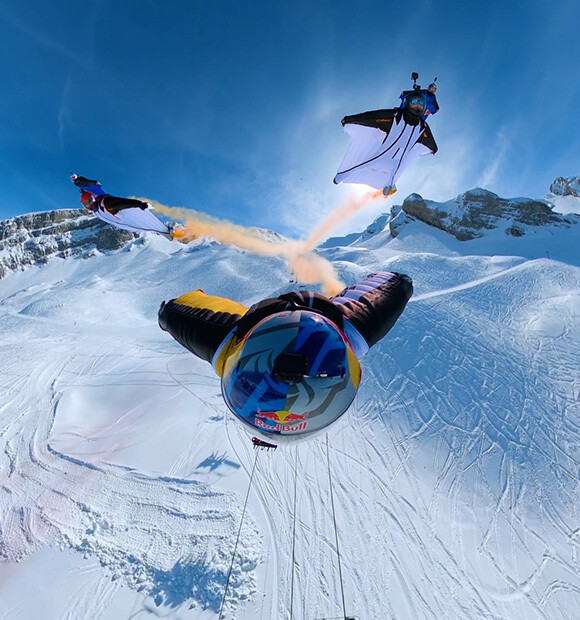
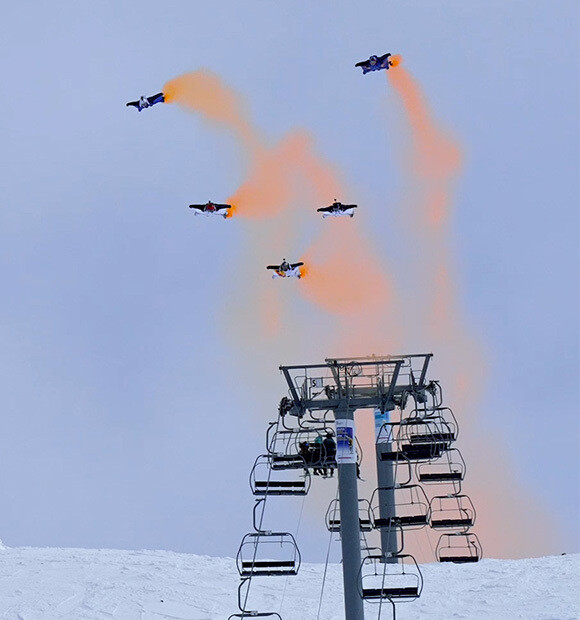
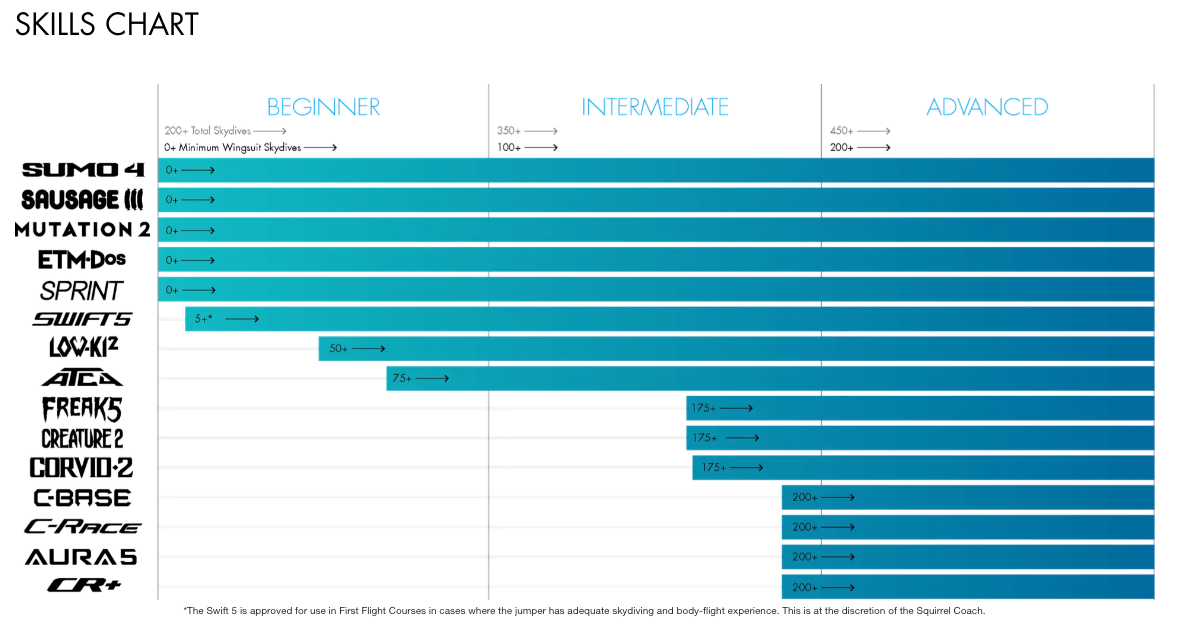
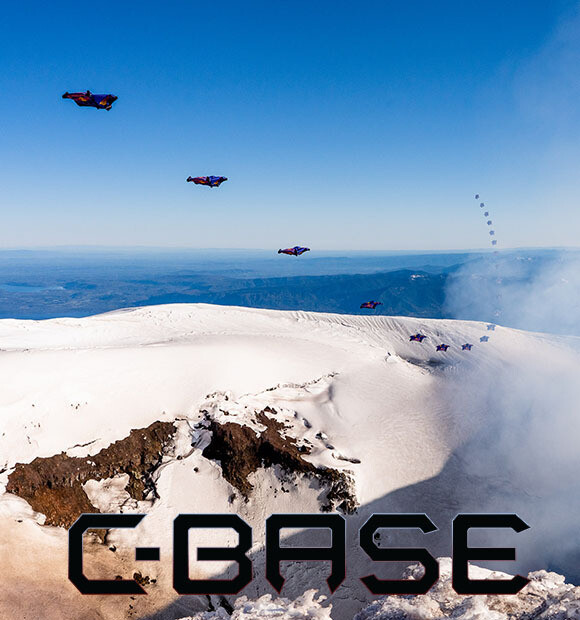
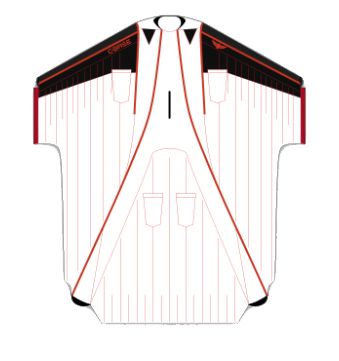
Advanced Flight Techniques: Master the C-BASE Wingsuit
For pilots seeking to push the limits of wingsuit flight, mastering advanced techniques is essential. The C-BASE Wingsuit is engineered to respond precisely to body inputs, allowing skilled flyers to perform complex maneuvers in both skydiving and BASE jumping environments.
High-Speed Maneuvers
High-speed maneuvers are a core aspect of advanced wingsuit flight. The C-BASE supports these techniques with stable aerodynamics and responsive control:
-
Vertical Dives – Achieve maximum velocity while maintaining stability through streamlined wing panels.
-
High-G Turns – Execute sharp, controlled turns using adaptive wing tensioning for precise input response.
-
Split-S Maneuvers – Combine dives and reversals safely with predictable glide path adjustments.
Tips for High-Speed Maneuvers:
-
Start with smaller altitude gains to practice control before full-speed dives.
-
Maintain shoulder and leg positioning consistently to avoid unwanted roll or yaw.
-
Always monitor altitude and deployment distance carefully.
Formation Flying
Formation flying is a thrilling component of advanced skydiving with the C-BASE Wingsuit:
-
Coordinated Group Movements – Synchronize turns, dives, and glides with other pilots.
-
Proximity Control – Maintain precise distance between wingsuits to prevent collisions.
-
Communication & Signals – Use hand signals or pre-agreed plans for safe group maneuvers.
Benefits:
-
Enhances spatial awareness and flight discipline.
-
Allows pilots to explore creative formations during extended flights.
-
Improves adaptability for BASE jumps with multiple participants.
Low-Altitude Proximity Techniques
BASE jumpers and Squirrel Wingsuit pilots benefit from techniques that allow safe navigation near terrain:
-
Ridge Riding – Glide along mountain ridges while maintaining horizontal speed and lift.
-
Canyon Carving – Perform controlled turns through narrow canyon passages.
-
Urban Swooping – Execute precise maneuvers around man-made structures under expert supervision.
Safety Considerations:
-
Always measure minimum safe distance from obstacles.
-
Maintain consistent wing tension and posture for precise control.
-
Begin proximity flights at moderate altitude before progressing to extreme routes.
Wingsuit for skydiving Advanced Glide Optimization
Optimizing glide performance maximizes flight duration and horizontal distance:
-
Body Position Adjustments – Slight changes in leg spread and shoulder angles can fine-tune lift and drag.
-
Wing Tension Fine-Tuning – Adjust tension for optimal glide ratio under varying wind conditions.
-
Energy Conservation – Minimize unnecessary movements to preserve momentum during extended flights.
By mastering these adjustments, pilots can achieve longer, smoother flights while maintaining control and reducing fatigue.Wingsuit for skydivingBASE jumping wingsuit
BASE jumping wingsuit Maneuver Sequencing
Complex flight patterns often involve chaining multiple maneuvers together:
-
Turn-to-Dive Sequences – Combine precise turns with vertical dives to navigate complex terrain.
-
Glide-to-Swoop Transitions – Shift from horizontal Squirrel flight into proximity swoops efficiently.
-
Emergency Recovery Integration – Incorporate emergency maneuvers into flight planning for confidence in high-stakes scenarios.
Pilots are encouraged to practice maneuver sequences in controlled environments before attempting them in extreme conditions.BASE jumping wingsuit
Training Recommendations
-
Incremental Progression – Build from basic maneuvers to advanced sequences gradually.
-
Simulated Flight Drills – Use training facilities or wind tunnels to practice body positioning and control.
-
Mentorship & Peer Review – Learn from experienced wingsuit pilots for feedback and skill refinement.
-
Video Analysis – Record flights to evaluate technique, posture, and efficiency.
Following these training practices ensures that pilots can explore advanced techniques safely while fully leveraging the capabilities of the C-BASE Wingsuit.
C-BASE Wingsuit FAQ: Everything You Need to Know
1. Who is the C-BASE Wingsuit designed for?
The C-BASE Wingsuit is designed for experienced skydivers, BASE jumpers, and pilots interested in Squirrel Wingsuit flying. While beginner wingsuit flyers should start with training-oriented suits, the C-BASE supports incremental skill progression, allowing intermediate and advanced pilots to explore high-performance maneuvers safely.
2. Can I use the C-BASE Wingsuit for both skydiving and BASE jumping?
Yes. The C-BASE is optimized for multi-discipline use:
-
Skydiving: Offers high glide ratio, precise maneuverability, and formation flying capability.
-
BASE Jumping: Features quick-deploy harnesses, reinforced panels, and stable low-altitude control.
Its versatility makes it suitable for pilots who enjoy switching between disciplines without needing multiple suits.
3. Is the C-BASE Wingsuit compatible with Squirrel-style flight?
Absolutely. The suit accommodates Squirrel Wingsuit configurations:
-
Adjustable wing tension for extended horizontal glide.
-
Harness adaptation for wider wingspan setups.
-
Responsive control surfaces for precise low-altitude maneuvers.
This allows pilots to perform advanced Squirrel maneuvers safely and effectively.
4. How do I choose the correct size?
The C-BASE Wingsuit comes in a range of sizes to suit different pilot body types. Consider:
-
Height: Ensure proper wing span alignment.
-
Weight: Adjust wing tension and harness configuration accordingly.
-
Skill Level: Advanced pilots may prefer tighter wing tension for agility, while intermediate pilots may prioritize comfort and stability.
Refer to the manufacturer’s sizing chart and, if possible, try a demo before purchasing.
5. What maintenance does the C-BASE Wingsuit require?
Regular maintenance is essential for safety and performance:
-
Clean the suit with mild soap and water; avoid harsh chemicals.
-
Air-dry completely after each flight to prevent mold.
-
Inspect wing panels, seams, and harness connections before and after jumps.
-
Periodically have the wingsuit checked by certified technicians.
Proper care ensures longevity and peak flight performance.
6. Can beginners fly the C-BASE Wingsuit?
While the C-BASE is primarily designed for intermediate and advanced pilots, beginners with sufficient wingsuit training can progress under guidance. It’s recommended to:
-
Start with controlled jumps under instructor supervision.
-
Gradually increase wing tension and maneuver complexity.
-
Avoid extreme low-altitude or proximity flights until fully confident.
7. How safe is the C-BASE Wingsuit?
Safety is a top priority. The C-BASE incorporates:
-
Reinforced wing panels to resist tearing.
-
Secure harness systems for stability during maneuvers.
-
Emergency deployment compatibility with main and reserve parachutes.
-
Quick-deploy features for BASE jumping scenarios.
Following pre-flight checks, proper setup, and incremental skill progression further enhances safety.
8. What locations are best for flying the C-BASE Wingsuit?
-
Skydiving: Open-air drop zones with high altitude (e.g., Perris Valley, Interlaken).
-
BASE Jumping: Cliffs, bridges, and canyon runs (e.g., Lauterbrunnen Valley, Verzasca Dam).
-
Squirrel Flights: Ridges, canyons, and controlled urban environments (e.g., Swiss Alps, Yosemite).
Always consider altitude, wind conditions, and pilot skill before choosing a location.
9. How do I adjust wing tension?
Wing tension affects glide, maneuverability, and control:
-
Looser tension for beginner or intermediate flights.
-
Moderate tension for balanced control.
-
Tighter tension for advanced, high-speed, or Squirrel-style maneuvers.
Gradually adjust tension over several flights to adapt to your preferred handling style.
10. Can I perform advanced maneuvers like swoops and proximity flights?
Yes, with proper experience and training:
-
Start with basic maneuvers before attempting complex sequences.
-
Always monitor altitude and environmental conditions.
-
Incorporate emergency recovery drills into your flight plan.
The C-BASE Wingsuit’s design supports precise control, enabling advanced maneuvers while maintaining stability and safety.
Additional information
| Size | XS, S, M, L, XL, XXL |
|---|



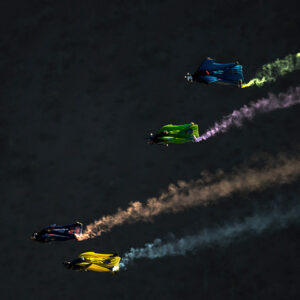
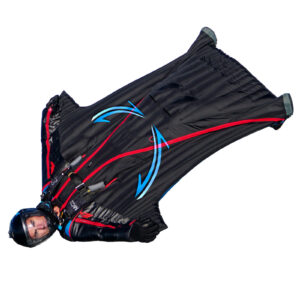
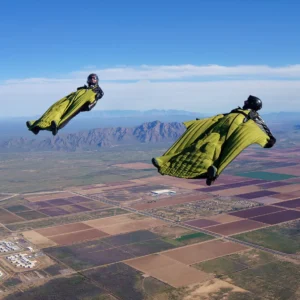
Reviews
There are no reviews yet.